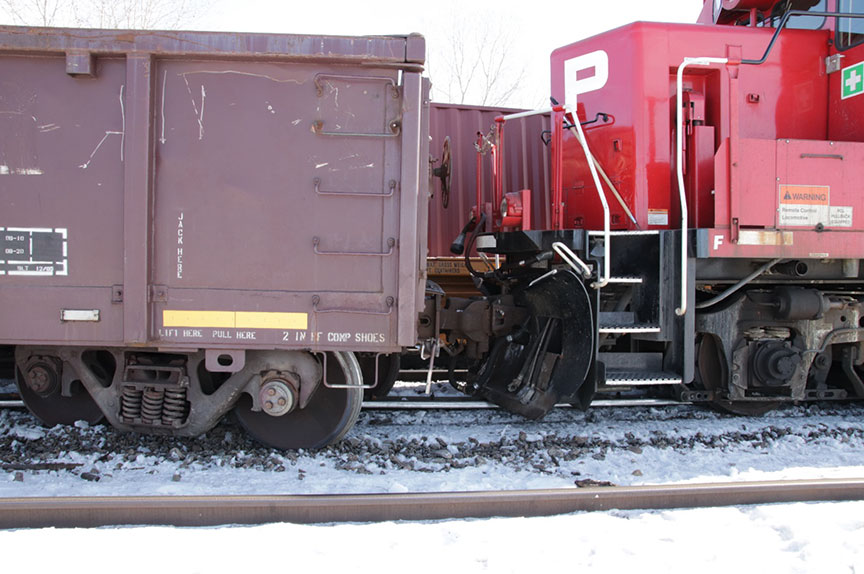Non-main track train collision and derailment
Canadian Pacific Railway
Freight train 118-09 and locomotive control system yard assignment CR01-09
Mile 172.0, Brooks Subdivision
Calgary, Alberta
The occurrence
On 9 March 2019, a Canadian Pacific switching assignment being operated by two crew members using a remote control system (Beltpack) was moving south on the Brooks Subdivision when it collided with another train also proceeding south on the same track, near Calgary, Alberta. The collision caused 12 cars and 2 locomotives to derail. No injuries or spills were reported.
Media materials
News release
Investigation report: March 2019 non-main track collision and derailment in Calgary, Alberta
Read the news release
Deployment notice
TSB deploys a team of investigators to the site of a train derailment in Calgary, Alberta
Calgary, Alberta, 9 March 2019 – The Transportation Safety Board of Canada (TSB) is deploying a team of investigators to the site of a Canadian Pacific train derailment in Calgary, Alberta. The TSB will gather information and assess the occurrence.
Investigation information
Download high-resolution photos from the TSB Flickr page.
Class of investigation
This is a class 4 investigation. These investigations are limited in scope, and while the final reports may contain limited analysis, they do not contain findings or recommendations. Class 4 investigations are generally completed within 220 days. For more information, see the Policy on Occurrence Classification.
TSB investigation process
There are 3 phases to a TSB investigation
- Field phase: a team of investigators examines the occurrence site and wreckage, interviews witnesses and collects pertinent information.
- Examination and analysis phase: the TSB reviews pertinent records, tests components of the wreckage in the lab, determines the sequence of events and identifies safety deficiencies. When safety deficiencies are suspected or confirmed, the TSB advises the appropriate authority without waiting until publication of the final report.
- Report phase: a confidential draft report is approved by the Board and sent to persons and corporations who are directly concerned by the report. They then have the opportunity to dispute or correct information they believe to be incorrect. The Board considers all representations before approving the final report, which is subsequently released to the public.
For more information, see our Investigation process page.
The TSB is an independent agency that investigates air, marine, pipeline, and rail transportation occurrences. Its sole aim is the advancement of transportation safety. It is not the function of the Board to assign fault or determine civil or criminal liability.
